
Gerrit Rietveld was a Dutch furniture designer and architect.
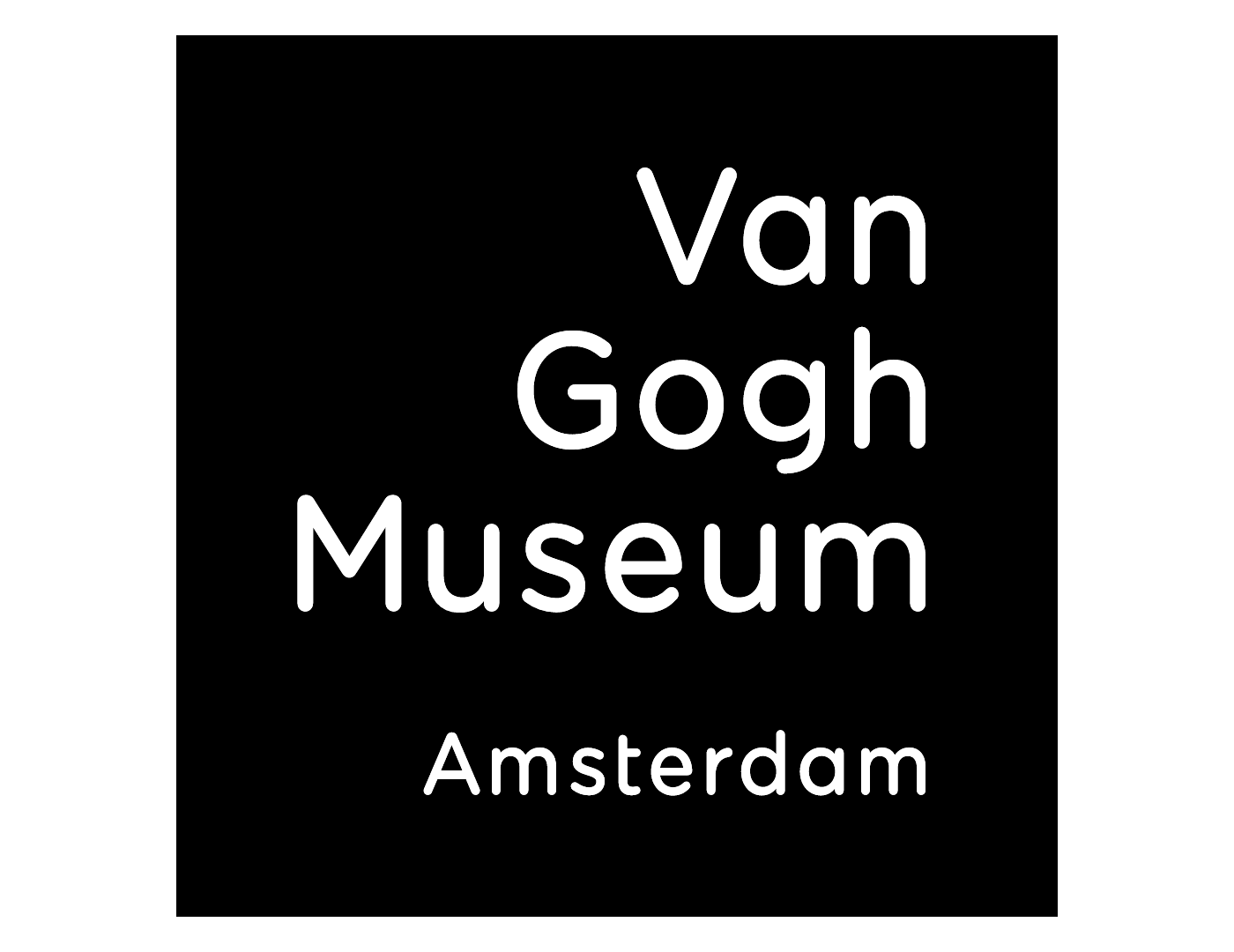
The Van Gogh Museum is a Dutch art museum dedicated to the works of Vincent van Gogh and his contemporaries in the Museum Square in Amsterdam South, close to the Stedelijk Museum, the Rijksmuseum, and the Concertgebouw. The museum opened on 2 June 1973, and its buildings were designed by Gerrit Rietveld and Kisho Kurokawa.
De Stijl, Dutch for "The Style", also known as Neoplasticism, was a Dutch art movement founded in 1917 in Leiden. De Stijl consisted of artists and architects. In a more narrow sense, the term De Stijl is used to refer to a body of work from 1917 to 1931 founded in the Netherlands. Proponents of De Stijl advocated pure abstraction and universality by a reduction to the essentials of form and colour; they simplified visual compositions to vertical and horizontal, using only black, white and primary colors.
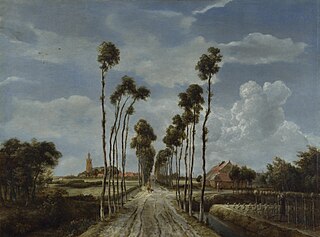
Meindert Lubbertszoon Hobbema was a Dutch Golden Age painter of landscapes, specializing in views of woodland, although his most famous painting, The Avenue at Middelharnis, shows a different type of scene.

Landscape painting, also known as landscape art, is the depiction of natural scenery such as mountains, valleys, trees, rivers, and forests, especially where the main subject is a wide view—with its elements arranged into a coherent composition. In other works, landscape backgrounds for figures can still form an important part of the work. Sky is almost always included in the view, and weather is often an element of the composition. Detailed landscapes as a distinct subject are not found in all artistic traditions, and develop when there is already a sophisticated tradition of representing other subjects.
Albert Eckhout (c.1610–1665) was a Dutch portrait and still life painter. Eckhout, the son of Albert Eckhourt and Marryen Roeleffs, was born in Groningen, but his training as an artist and early career are unknown. A majority of the works attributed to him are unsigned. He was among the first European artists to paint scenes from the New World. He was in the entourage of the Dutch governor-general of Brazil, Johan Maurits, Prince of Nassau-Siegen, who took him and fellow painter Frans Post to Dutch Brazil to have them record the country's landscape, inhabitants, flora and fauna. Eckhout is also famous for his still-life paintings of Brazilian fruits and vegetables. His paintings were intended for decoration in a domestic context.

Mont Sainte-Victoire is a series of oil paintings by French artist Paul Cézanne.

Cornelis Huysmans was a Flemish landscape painter who was active in Antwerp, Brussels and Mechelen. Huysmans held a foremost position in Flemish landscape painting in the late 17th and early 18th century and was particularly known for his pseudo-Italianate landscapes with mountains in the background, which show the influence of Nicolas Poussin and Jacques d'Arthois.

The Jewish Cemetery is an oil-on-canvas painting by the Dutch landscape painter Jacob van Ruisdael, now at the Detroit Institute of Arts. While growing up in Haarlem, his father, Isaak van Ruisdael, and uncle Salomon van Ruisdael taught him painting. Jacob van Ruisdael painted an allegorical painting depicting hope and death in The Jewish Cemetery. Located on Amsterdam's outskirts, it is a prominent resting place for Amsterdam's large Jewish Portuguese community. These tomb monuments commemorate the leaders of the newly arrived Portuguese-Jewish community. The central elements of the painting, however, are different from how Ouderkerk appears to achieve the painting's compositional and allegorical intent. This painting is twice as large as the typical landscape painting from the 17th century. After being cataloged in England in 1835, the artwork, The Jewish Cemetery, disappeared. The Detroit Institution of Art acquired the painting in 1920 after rediscovering it in London.

Jacob Grimmer was a Flemish landscape painter and draughtsman. His rural scenes and landscapes of views around Antwerp marked an important development in 16th century Flemish landscape painting away from the world landscape with its fantastic panoramas and whimsically-shaped gigantic rocks towards greater simplicity and authenticity. His work influenced the next generation of Flemish landscape painters. Grimmer was a capable colorist who was able to create harmonic landscapes by using realistic colours and atmospheric values effectively.
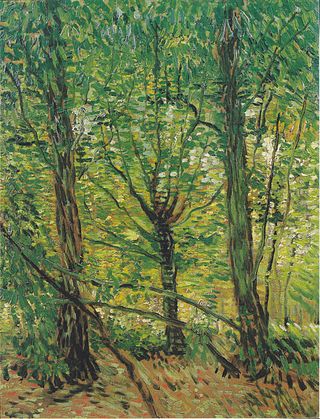
Trees and Undergrowth is the subject of paintings that Vincent van Gogh made in Paris, Saint-Rémy and Auvers, from 1887 through 1890. Van Gogh made several paintings of undergrowth, a genre of painting known as sous-bois that was brought into prominence by artists of the Barbizon School and the early Impressionists. The works from this series successfully use shades of color and light in the forest or garden interior paintings. Van Gogh selected one of his Saint-Rémy paintings, Ivy (F609) for the Brussels Les XX exhibition in 1890.
Frank Ammerlaan is a Dutch artist who lives and works in London.

Hendrik Voogd was a Dutch painter and printmaker, who was active in Italy.
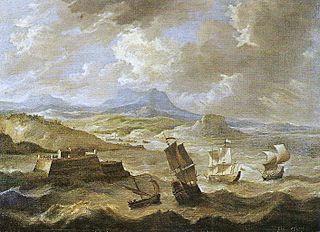
Gillis Peeters, was a Flemish painter, draughtsman and engraver who contributed to the development of marine art and landscape painting in Flanders.

Alice Dalton Brown is an American painter known for realist works that capture the light and texture of specific, if often invented, places and moments. Her signature motifs include exteriors of Victorian houses, barns and waterscapes viewed through windows or sheer curtains, by which she explores the play of light, shadow, reflection and geometry across various surfaces. Critic J. Bowyer Bell wrote of Dalton Brown's style, "her realist works are more than the sum of their parts. In fact, there are so many parts so cunningly included, so many skills on display, that the result is almost an encyclopedia of what can be done."

Renier Meganck was a Flemish painter and printmaker known for his landscapes and still lifes. After training in Brussels and working in Ghent, he worked in Central Europe and finally in Vienna where he was active as a painter to the Imperial court and an art dealer. His patrons included Karl Eusebius, Prince of Liechtenstein who was the founder of the Liechtenstein collection.

The Avenue at Middelharnis is a Dutch Golden Age painting of 1689 by Meindert Hobbema, now in the National Gallery, London. It is in oil on canvas and measures 103.5 by 141 centimetres. It shows a road leading to the village of Middelharnis on the island of Goeree-Overflakkee in the Meuse delta in South Holland, the Netherlands.

Mathieu Dubus was a Flemish-born decorative and landscape painter who was active in The Hague in the Dutch Republic. He painted fantastic landscapes with rocks and stark contrasts of light and dark, which appear modern and unlike those of his contemporaries.
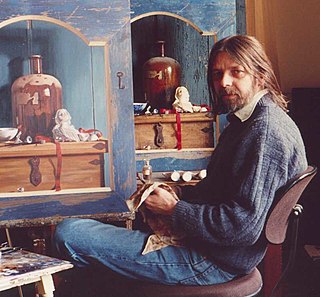
Rob Møhlmann is a Dutch artist, poet and writer of art books. He would predominantly manifest himself as a visual artist, but also wrote several articles, collections of poems, and dozens of books on art. In addition, he started his own museum "to house art that represents something", conceived and organized numerous exhibitions. He would also accumulate a large art collection.

Bleaching on the Lawn is an oil on canvas painting by the German painter Max Liebermann, from 1882 to 1883. It depicts a scene that takes place in a Dutch cottage garden in Zweeloo, in the province of Drenthe, in North Holland, where several washerwomen are laying out large white linen towels to dry and bleach. The painting is in the collection of the Wallraf-Richartz-Museum, in Cologne.















